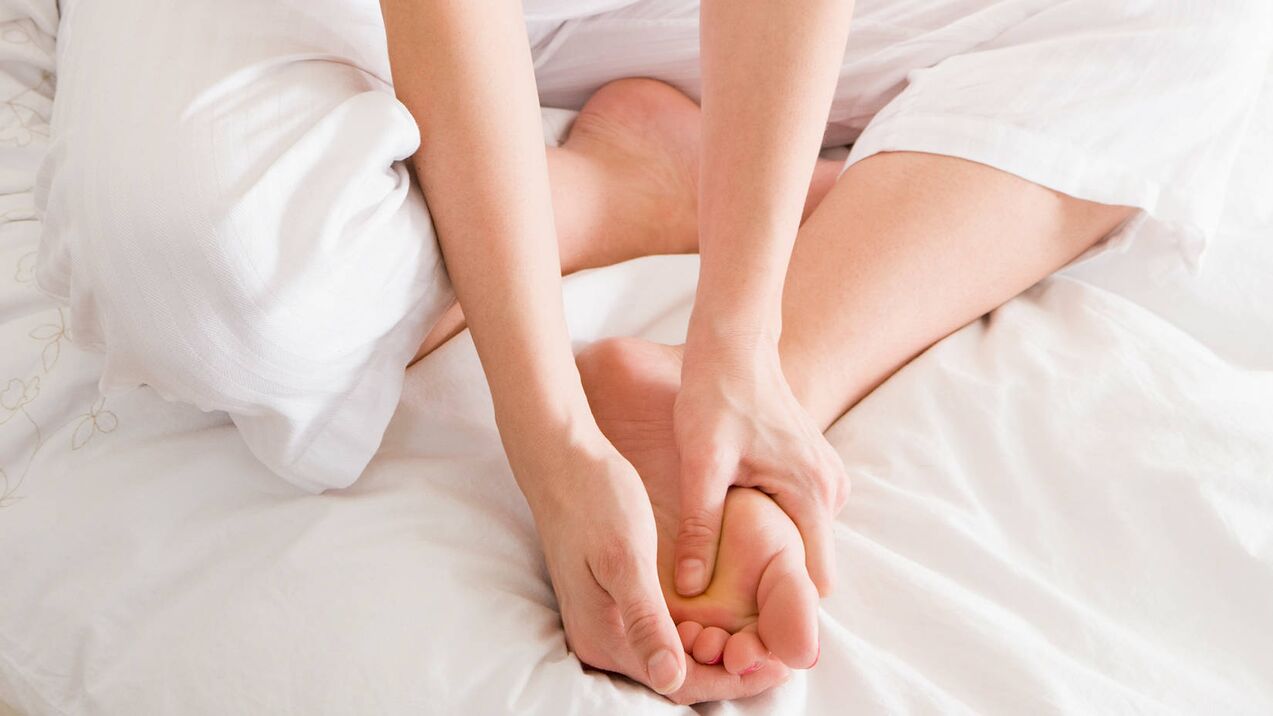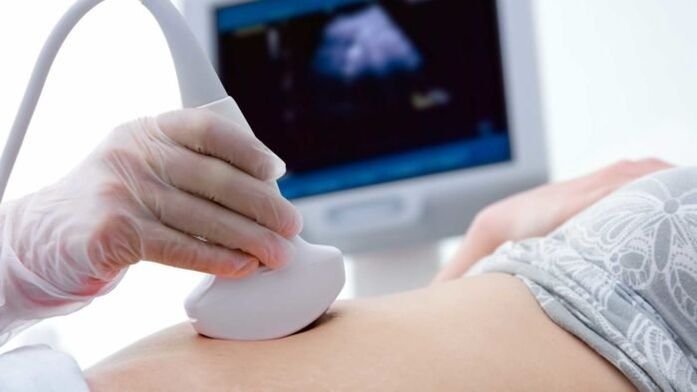What is varicocele? The disease is characterized by swelling of the peripheral veins under the skin. The disease has no age limit, i. e. it can occur even in young children.
Experts recommend comprehensive treatment of varicose veins. Therapy includes drugs and traditional medicine. In severe cases, surgery is required. The symptoms and treatment of varicose veins in the legs are different.
Reason
There are factors that cause pathology of the veins in the legs. Lifestyle is one of the main factors. If a person regularly stays in the same position, such as standing or sitting, the risk increases by 70%.
Improper footwear or above-standard physical activity can develop the disease.
Formation of varicose veins in the legs in women who have given birth. This is due to the fact that the body is strongly exposed to additional stress. Another reason is hormonal decline, which can occur with oral contraceptives.
Indirect causes include the following factors:
- Smoke. Toxic substances interfere with hematopoiesis, as a result of which the work of blood vessels is disrupted.
- Prolonged depression and stress. The nervous system is directly connected to the blood vessels. With any violation of the central or autonomic nervous system, the vessel wall becomes thin and inelastic.
- Physical activity above normal. Varicose veins of the lower extremities often occur in athletes who want to gain muscle. Excessive exercise contributes to the development of varicose veins.
- Wrong shoes. Heel walking often causes varicose veins. It is for this reason that the pathology is most characteristic of women. When wearing high heels, the entire load falls on the legs, in which case the veins are badly affected.
Another reason is genetic predisposition. Having the disease in a close relative increases the risk of developing varicose veins.
Symptoms of the disease
Signs of varicose veins in the legs in women and men develop gradually. Many men and women do not pay attention to the first signs of varicose veins, but only refer to other factors. Because of not timely treatment, varicose veins are neglected quite difficult to treat. Symptoms of the disease include:
- A network of blood vessels, which in the early stages of the disease occurs on the inside of the thigh or on the calf.
- In the evening, the patient began to worry because his legs were tired, heavier, and had an itchy feeling inside. It seems that the legs are constantly itchy, although scratching does not bring results.
- At night, patients often experience cramps in the lower extremities.
- After sleep, swelling is observed.

The above symptoms are typical for the early development of varicose veins. In the case of timely initiation of treatment, it is possible to completely eliminate the disease without recurrence or consequences. If a person does not pay attention to the first signs, varicose veins will develop further. In this case, the symptoms of varicose veins of the legs are as follows:
- Venous nodes appear protruding above the skin.
- When you feel the veins in your legs, you will feel pain.
- During any movement or walking, pain is observed resembling muscle pain.
- Feet get tired faster, feel heavy.
Varicose veins of the lower extremities can lead to dangerous complications that affect the patient's quality of life. For this reason, experts advise you to be vigilant about your health, and for the slightest symptoms of varicose veins in the legs, immediately consult a doctor.
Diagnose
This diagnosis can only be refuted or confirmed by a vascular surgeon or a phlebologist. A qualified specialist can recognize this pathology even at the initial stage. First, the doctor examines the affected skin, asking general questions: how long ago did the first signs of varicose veins appear, does the patient have any symptoms, is there any way to treat it at home?.

Finally to verify the diagnosis and determine the severity of the disease, the following diagnostic categories are used:
- Ultrasound procedure.
- Phlebography with contrast medium.
Today, phlebography is more commonly used for diagnosis, this is because this method is the most accurate and informative.
Varicose veins treatment
How to treat varicose veins in women? Only a phlebologist can prescribe the correct treatment. Depending on the severity of the disease, different treatment methods are used. Surgical intervention is used only in the severe stages of the disease, when drug therapy has no effect. Comprehensive treatment for varicose veins includes the following:
- Tight gauze bandages, compression underwear, elastic bandages.
- A substance useful for varicose veins is hirudin. Naturally, this element can be obtained through the bite of a leech.
- Endovasal laser coagulation is a method of closing veins under the skin using a laser beam.
- Sclerotherapy is the removal of veins by injecting a substance through the finest needles.
- Massage - used to thin the blood and improve blood circulation.
- Take anti-inflammatory drugs, use topical ointments.
Treatment with folk remedies
How to cure varicose veins? This question is asked by everyone who is faced with a diagnosis. As mentioned above, vein specialists recommend approaching this issue holistically. In the context of drug treatment of varicose veins, a number of traditional medicine recipes are successful and effective.

Consider how to treat varicose veins of the legs in women:
- Tomatoes in the garden will help eliminate itching and relieve stress. For recipes, both ripe and green tomatoes are suitable. Cut a tomato into slices and apply it on the acne-affected skin. Fixed with tape. Every three hours, fresh vegetables should be replaced. The greatest benefit was found in homemade tomatoes over store-bought tomatoes. You need to apply tomatoes throughout the day. The next day you will feel lightness in your legs.
- Lubricate a cabbage leaf with olive oil and apply to swollen veins. Fix with tape and leave for at least 7 hours. It is recommended to treat at night. With severe pain, you can apply this formula daily, in the evening.
- We regularly grease cotton canvas with liquid flower honey. We wrap the leg, fixing it with an elastic band from above. We left in 3 hours. This procedure is recommended to be performed every three days.
- Cut the green walnuts in half and put them in a capacity jar. Fill with vodka or medical alcohol. Cover and send in a dark place for a week. When the tincture is ready, massage your feet from heel to thigh every evening with massage movements.
- Pour the leaves and flowers of St. John's wort with water and bring to a boil. Turn off the heat and close the lid. After 6 hours - the broth is ready. We put cotton in a decoction of water, rub it lightly and fix the fabric on the affected leg. This formula helps to eliminate itching and pain. You can use the formula every day.
- Squeeze aloe vera juice into a glass bowl. In total, you should get at least one tablespoon. Add 5 drops of almond oil and 3 drops of camphor oil. We heat in a pot of water, up to about 40 degrees. We rub swollen veins and skin about three times a week.
- We take lilac flowers and put them in an enameled box. Pour 0. 5 liters of sunflower oil. Place in a water bath and bring to a boil. Cool to room temperature and apply to damaged skin. Head with a gauze bandage. We go in the night. The procedure must be carried out at least three times a week.
Possible complications
Varicose veins of the lower extremities need prompt treatment. If you do not take any therapeutic action, the following complications may occur:
- Pulmonary embolism.
- Thrombosis.
- Venous thromboembolism.
- Inflammation of the veins.
- Varicose veins.
- Skin inflammation.
Precautions
People who are most at risk of developing varicose veins should follow precautions. First of all, this category of people includes people with close relatives who are susceptible to the disease. You should also pay special attention to your health for women who are giving birth and those whose jobs require a lot of sitting or standing. Consider these general recommendations:
- Live an active lifestyle. Walk more often, move more, exercise several times a day. If your lifestyle and busy work schedule don't allow you to participate in any type of sport, in this case, there is a logical solution: move out of the workplace, out of transportation early. more than a few stops. Daily walking will replace sports.
- If the main work time requires a sitting position, try to move the legs more often, including the fingers. To diversify the position of the legs, experts recommend starting standing, about 30 cm from the floor, periodically raising the legs.
- Women should stop taking hormonal pills and ask their doctor to prescribe another type of birth control pill.
- Do not wear shoes with very high heels every day.
- Give up smoking and other bad habits.
If you notice heaviness, spider veins in your legs, or pain in your lower extremities, contact your phlebologist. Therapy indicated in the early stages will help avoid serious complications and recurrence.

























